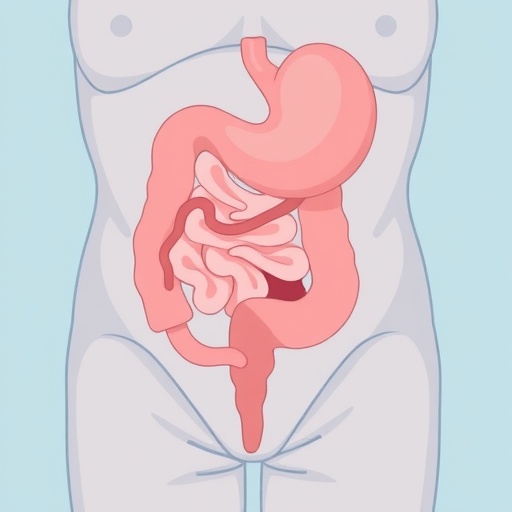Researchers from the University of Tokyo performed the first study to quantify highly processed food consumption and to investigate its association with diet quality among Japanese children and adolescents. Highly processed foods (HPFs) accounted for over one-fourth of the total energy intake amongst youths. Consumption was negatively associated with the intake of healthy foods, such as fruits, vegetables and pulses, and positively associated with the consumption of confectioneries.

Credit: ©2024 Rohan Mehra
Researchers from the University of Tokyo performed the first study to quantify highly processed food consumption and to investigate its association with diet quality among Japanese children and adolescents. Highly processed foods (HPFs) accounted for over one-fourth of the total energy intake amongst youths. Consumption was negatively associated with the intake of healthy foods, such as fruits, vegetables and pulses, and positively associated with the consumption of confectioneries.
It’s common knowledge that poor-quality diets are considered major risk factors for many health issues and even noncommunicable diseases such as Type 2 diabetes. Therefore, researchers seek to understand factors related to diet quality as a way to improve people’s health. Research on HPFs has been rapidly increasing, highlighting their potential impact on public health. However, few studies have been conducted in Japan, with none focusing on children and adolescents, due to challenges in assessing them.
“Our previous research on HPF consumption in adults in Japan found that higher consumption was negatively associated with diet quality. This significant finding prompted us to investigate whether similar associations exist in younger generations,” said Assistant Professor Nana Shinozaki from the School of Public Health. “My team and I ran a cross-sectional study, one where many people are assessed in a short space of time rather than fewer people over a long period of time, to understand the association between HPF consumption and overall diet quality among Japanese children and adolescents. We found that higher HPF consumption is associated with poorer diet quality in 1,318 participants aged 3-17 years.”
This probably doesn’t come as a surprise to many, but it’s important to note that this is the first time hard data has been put to this specific demographic, and that fact might aid in improving public health. One of the difficulties in research on diets is that so many of the issues lack precise definitions. For this reason, Shinozaki and her team picked an existing dietary classification framework developed by researchers at the University of North Carolina at Chapel Hill (UNCCH) in the U.S. to classify the food that participants consumed, and the Healthy Eating Index-2020 and the Nutrient-Rich Food Index 9.3 to evaluate the quality of their diets. Under the UNCCH classification, HPFs are defined as “multi-ingredient, industrially formulated mixtures processed to the extent that they are no longer recognizable as their original plant/animal source.”
“The biggest challenge was collecting detailed dietary data, which are essential to identify which foods are HPFs, on eight days over the course of a year from a large sample of about 1,300 individuals,” said Shinozaki. “This process of assessment by researchers, and assessments by participants or parents, was highly burdensome for both participants and investigators due to the need for accurate and consistent recording of dietary intake. Our research could not have been accomplished without the support of research dietitians throughout Japan, who played a crucial role in supporting participants and collecting data.”
What might surprise some readers is that the cliché of Japan’s national diet being the model of healthy eating is a little inaccurate and out of date.
“Professor Kentaro Murakami (of the University of Tokyo) recently found that in a nationally representative sample of Japanese adults, the mean total score of the Healthy Eating Index-2015, a widely accepted diet quality index, was similar to that of average Americans. This finding suggests that the Japanese diet would not be as healthy as expected,” said Shinozaki. “Wherever you may be, at the individual level, increasing the consumption of unprocessed or minimally processed foods, especially fresh fruits and vegetables, would be helpful. At the societal level, public awareness campaigns, policy and regulation, or food availability and market changes to promote the reduction of HPFs could be beneficial. Our findings support ongoing efforts to develop nutritional guidelines and public health strategies aimed at reducing the prevalence of diet-related diseases.”
###
Journal article:
Nana Shinozaki, Kentaro Murakami and Kimoto N. “Highly processed food consumption and its association with overall diet quality in a nationwide sample of 1,318 Japanese children and adolescents: A cross-sectional analysis based on 8-day weighed dietary records”, Journal of the Academy of Nutrition and Dietetics, DOI: 10.1016/j.jand.2024.06.001,
Link: https://www.sciencedirect.com/science/article/pii/S2212267224002673?via%3Dihub
Funding: This research was funded by the Ministry of Health, Labor and Welfare, Japan (grant number 20KA1009). The Ministry of Health, Labor and Welfare had no role in the design, analysis, or writing of this article.
Useful links:
Department of Social and Preventive Epidemiology
http://www.nutrepi.m.u-tokyo.ac.jp/english/index.html
School of Public Health
https://www.m.u-tokyo.ac.jp/sph/en/en-highlight/
Graduate School of Medicine
https://www.m.u-tokyo.ac.jp/english/
Research contact:
Assistant Professor Nana Shinozaki
Graduate School of Medicine, The University of Tokyo,
7-3-1 Hongo, Bunkyo-ku, Tokyo, 113-8656, Japan
[email protected]
Press contact:
Mr. Rohan Mehra
Public Relations Group, The University of Tokyo,
7-3-1 Hongo, Bunkyo-ku, Tokyo, 113-8656, Japan
[email protected]
About The University of Tokyo:
The University of Tokyo is Japan’s leading university and one of the world’s top research universities. The vast research output of some 6,000 researchers is published in the world’s top journals across the arts and sciences. Our vibrant student body of around 15,000 undergraduate and 15,000 graduate students includes over 4,000 international students. Find out more at www.u-tokyo.ac.jp/en/ or follow us on X (formerly Twitter) at @UTokyo_News_en.
Journal
Journal of the Academy of Nutrition and Dietetics
DOI
10.1016/j.jand.2024.06.001
Method of Research
Observational study
Subject of Research
People
Article Title
Highly processed food consumption and its association with overall diet quality in a nationwide sample of 1,318 Japanese children and adolescents: A cross-sectional analysis based on 8-day weighed dietary records
Article Publication Date
7-Jun-2024




